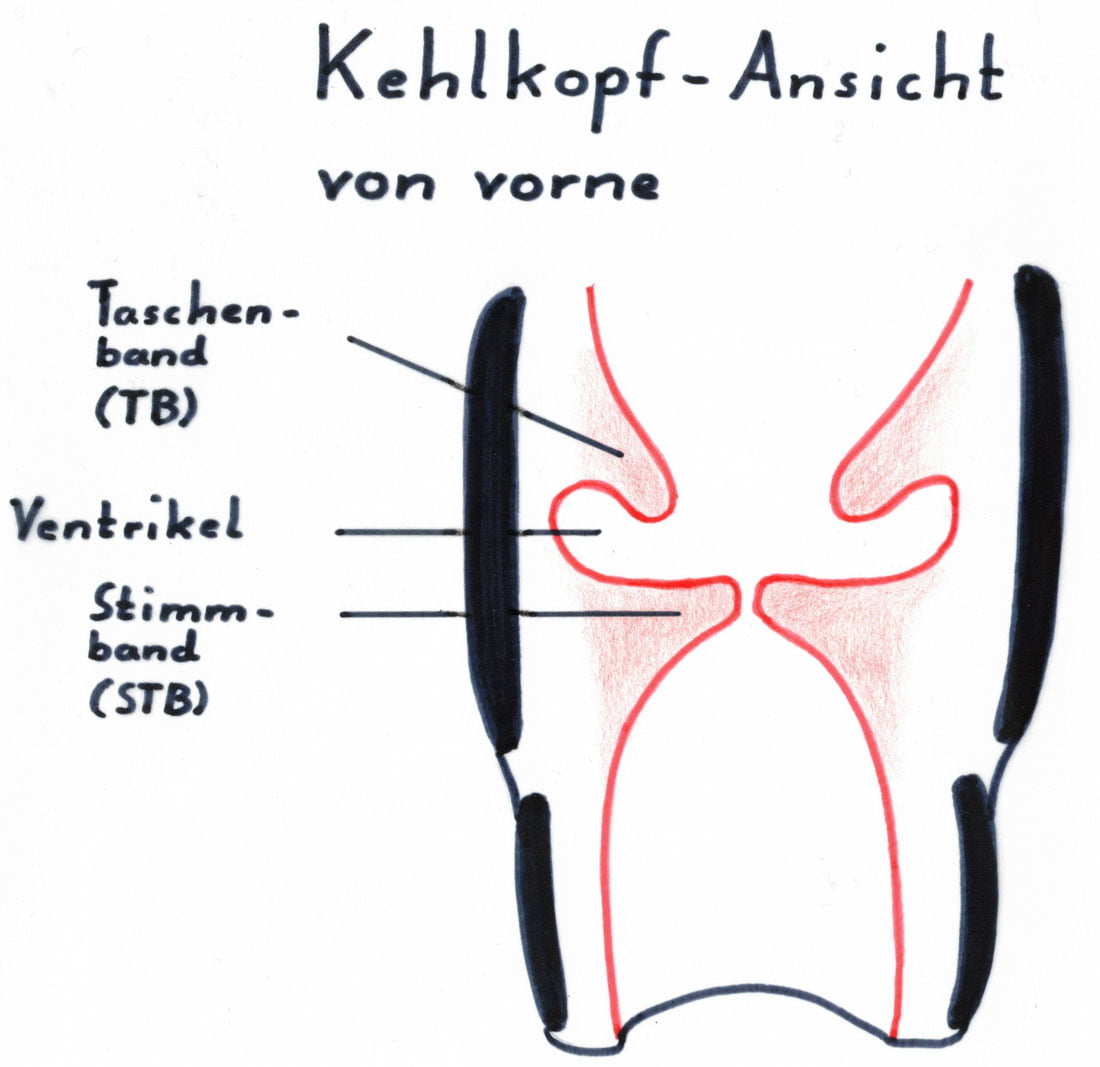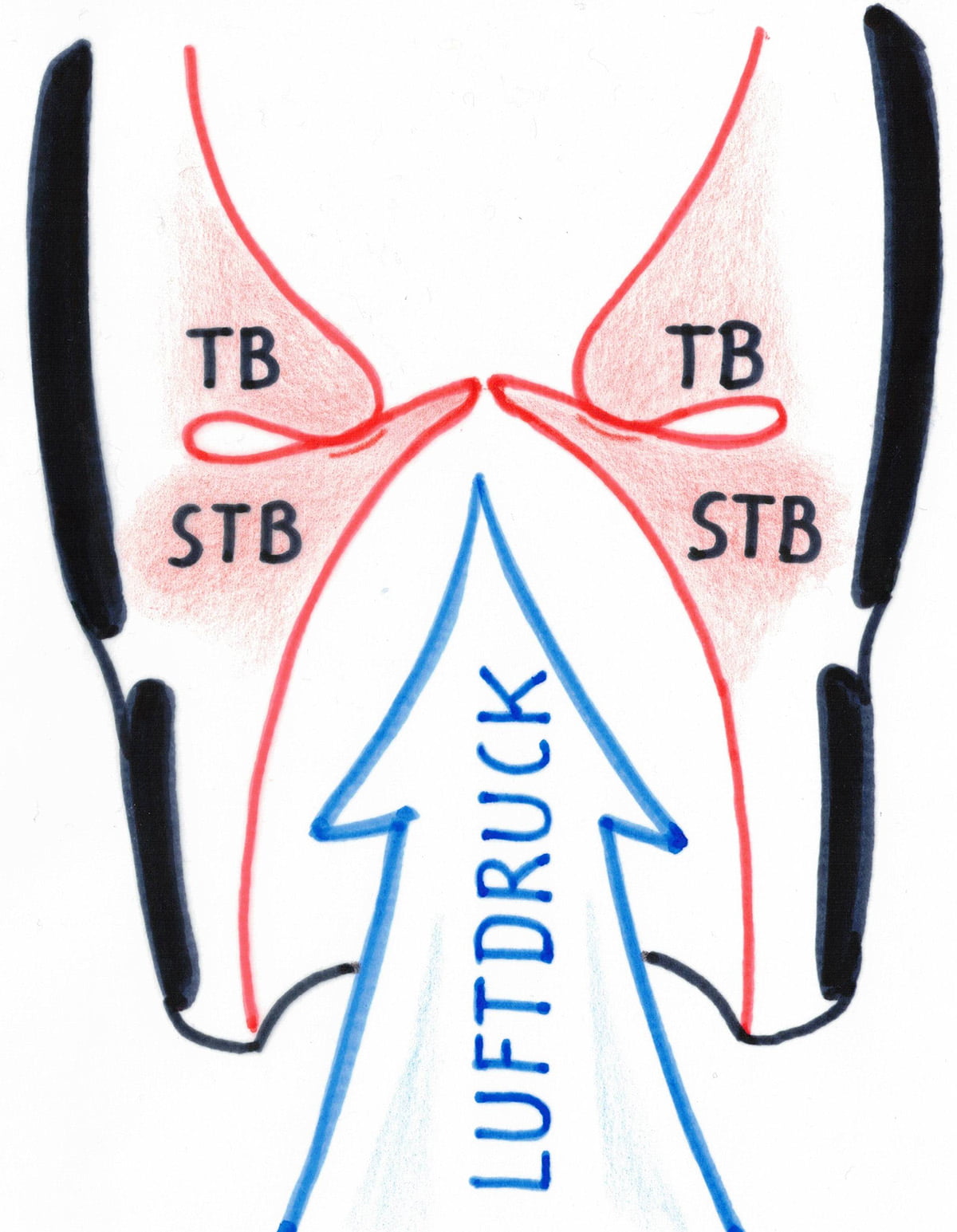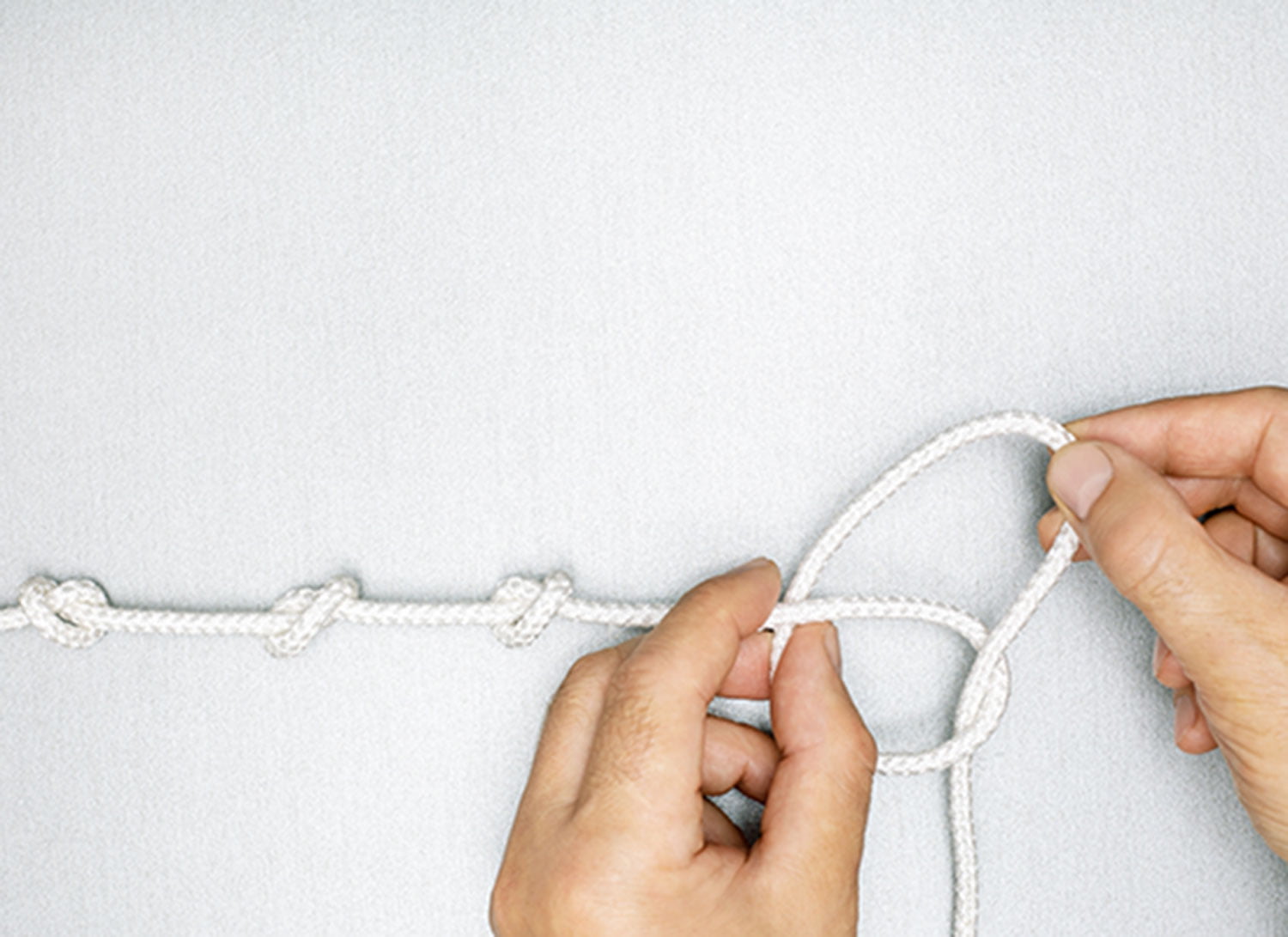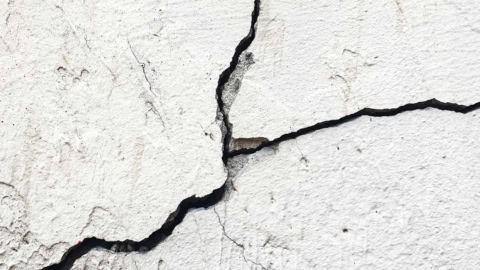Singing inspires. Not only the audience when listening. The full possession of one's own voice, the liveliness, the expression of feelings when singing also creates enthusiasm. Once you have discovered this for yourself, you don't want to stop singing at first.
When rehearsing a lot at home or with their own band, many people strain their voices and become hoarse. And for some who regularly sing at the top of their lungs, there is a fear: Could I get nodules on my vocal cords? Because they have heard before: people who are constantly hoarse or have a rough vocal sound could have vocal cord nodules.
My singing students also often ask me questions about this topic. Therefore, in this blog article we would like to give you some helpful information about what nodules on the vocal cords are and what you can do to avoid them.
Vocal cord nodules: What is it?
Vocal cord nodules or "singer nodules" are deposits on the inner edge of our vocal folds. They are caused by a permanent overload of the vocal cords. This causes the vocal folds to swell. If the swellings can no longer recede, they harden and form the infamous "nodules" (marked red in the picture).

Even if the nodules are already there, it is not all too late. With the help of appropriate voice therapy and the right singing technique, the nodules can disappear. Only rarely do they have to be removed surgically. To prevent this from happening, the question is what we as singers can do to prevent it.
Doctors often first see vocal cord nodules in crying babies or toddlers. This is why they also call them "crying nodules", and this already names a cause. Constant crying or speaking loudly with a rough voice can also lead to nodules in adults later on. Depending on the genre, this can also be a problem for singers. In rock and metal music, for example, shouting ("yelling"), growling (the "growl") or singing with a rough voice (the "gravel sound") is a frequently used means of expression.
If you're a rock singer, you won't want to give up stride techniques or a rough vocal sound - and the great thing is: you don't have to in order to avoid singing nodules. The important thing is to take all unnecessary pressure off your vocal chords, preferably with the help of a singing teacher.
Singing with pressure: constriction of the vocal cords
Singing nodules are often caused by too much pressure when singing - with or without shouting. Let's take a look at the structure of our larynx to understand this better. Directly above our vocal cords are pocket-like cavities (called "Morgagnian ventricles"). The top of these ventricles is formed by two strong folds of mucous membrane, the pouch ligaments.

The pocket ligaments can also contract and close. When you hold your breath, for example, or when you cough, you press your vocal cords together. You can even produce sounds with them, or rather: press them out (more on this later), which is why they are sometimes called "false vocal cords". When you sing, on the other hand, the vocal cords retract and open up the space above the vocal cords.
The space in the ventricles contributes to the sonority of the voice. If the space above the vocal cords is narrowed, the sound will be tight and squeezed. This can happen if you push up the larynx when singing high notes. Or if you sing with too much air pressure. Let's take a closer look at what happens in the larynx when you sing with too much pressure.
In order to amplify their notes in the high register, many amateur singers push the air upwards, with a lot of muscle pressure from the belly. This causes the air to build up under the closed vocal cords and pushes the vocal cords upwards. In the process, the space of the ventricles above can become so narrow that the vocal cords rub directly against the pouch ligaments when singing:

This dampens the vocal cords, which can no longer vibrate freely. The vocal folds become inflamed, and in the long term this can lead to damage such as the infamous nodules, or even vocal cord polyps or cysts.
Relief: breathing technique and support
In order to avoid unnecessary air pressure, it is important to use the correct Breathing technique and support on. Physically, our vocal cords are "air-driven oscillators", they are set in vibration by the pressure of the air. However, it is quite wrong to deliberately create pressure from below when supporting the notes - some misunderstand the support when singing as a kind of abdominal press and thus create the damaging overpressure.
Instead, think about negative pressure: when you inhale briefly before singing with the help of your diaphragm, you create a negative pressure that draws the air you need into your lungs. When you sing out your note or phrase, you maintain this expansion in your flanks. "Support" means nothing other than maintaining your inhalation posture while singing, especially through your intercostal muscles.
Pay attention to three things in your breathing technique to take pressure off your vocal cords:
- an upright posture, plumb (like a puppet on a string),
- short, silent inhalation, over the diaphragmatic impulse (as before the surprised exclamation: "Oh my God!"),
- and maintain the inhalation posture while singing (flank muscles).
Always singing at the top of your lungs: Overloading the voice versus timing
Some singing enthusiasts also overstrain their voice when they first hear the so-called "Belting" have discovered for themselves. Singing with a full voice in a high register, on key, feels great, powerful, electrifying. In rock and pop music we want to hear that, but it is also demanding, especially for the still untrained voice.
Imagine that your hands are your vocal cords. When you sing strong notes in a speaking voice, as when you speak loudly, it is like clapping your hands slowly and strongly. Singing high notes with the same strong speaking voice quality, i.e. "belten", is like clapping your hands just as strongly, but now as fast as you can.
You quickly feel what is happening: Your hands become hot and red. If you continue, they swell up. The same happens to your vocal folds when you can't stop belching with excitement. It's tricky because we can't feel our vocal folds directly. We only notice something when we become hoarse or get a sore throat.
The solution here is also: good technique and moderate strain. The voice consists of muscles, connective tissue and cartilage. Like all muscles of the body, it must be accustomed to higher loads through training. Train them like an athletewith a gradual increase in load and sufficient recovery time. Therefore, do short belting exercises at first, applying them to selected song passages. Then take a break of one or two days with belting and do other exercises for your articulation or vocal endurance.
Striding techniques as an effect
Let's return to shouting, growling and singing in a raspy voice. Screaming without screaming: Yes, it can be done, even in the long run. "Skillful yelling" with as little vocal strain as possible is a technique that can be learned.
For example, there is the "Vocal Fry", a striding technique that we often hear in metal singing. Although metal vocals sound like shouting, singing with the Vocal Fry is based only on a soft creaking of the voice, in extreme electronic amplification. These are individual "glottal beats" strung together - the crackle you hear when you take your voice to the lower limit of your range. The Vocal Fry is therefore not a significant strain on your voice. A little tip: You can even use it to relax your vocal cords at the end of your practice sessions.
Singing distorted or rough in a full voice, on the other hand, is a real strain on the vocal cords. How singers produce this rough sound (the "gravel sound") is not exactly clear and probably varies depending on the vocal anatomy. It is assumed that it is controlled constriction above the vocal cords, for example by the tonsils, which distorts the sung tone.
In growl or the so-called "Louis Armstrong sound", the pocket straps are used to distort the sounds. In New Orleans jazz, for example, we sometimes hear jazz singers singing with this sound. Singing with the pocket bands can be a great effect, but like singing with a rough voice, it should not become a permanent singing habit. As explained above, it is these "false vocal cords" that constrict the real vocal cords when singing if they are not kept open. Again, it comes down to the right timing in your practice routine: Allow your voice the recovery time it needs.
Conclusion
To sum up, we can say this: If you use distorted vocal sounds as an effect and have a genre-savvy vocal coach help you, you are well prepared. With the right technique, keeping any unnecessary pressure off your vocal cords, and a well-planned practice routine, you can maintain a healthy, strong voice throughout your life, even as a hardcore rock singer. Without ever having to deal with vocal cord nodules.






